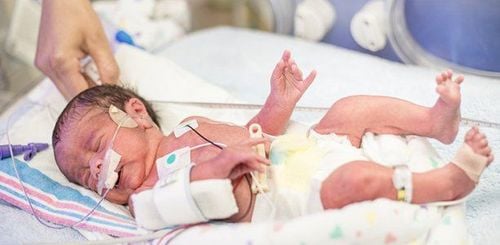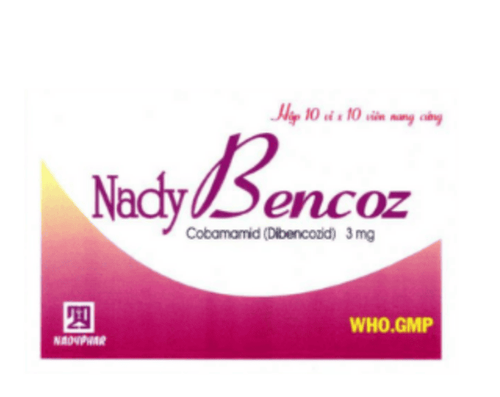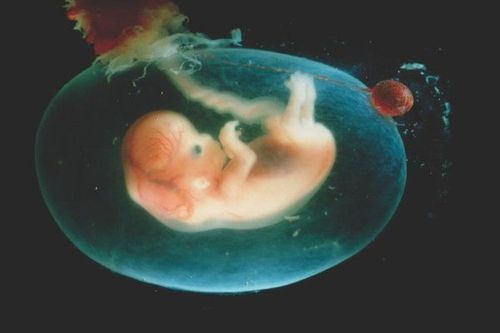This is an automatically translated article.
The article was consulted with Specialist Doctor II - Nguyen Thi Minh Tuyet - Head of Obstetrics and Gynecology Department - Vinmec Central Park International General Hospital.Premature birth is when a baby is born between the 22nd week and before the 36th week of pregnancy. The three most common causes of preterm birth are the fetus, the mother, and the placenta.
1. When is a baby considered premature?
Premature birth is when a baby is born between the 22nd week and before the 36th week of pregnancy.
Extremely preterm birth: Born when the baby is less than 28 weeks pregnant. Very Premature: Born between 28 and 33 weeks and 6 days of gestation. Late preterm birth: Born when the fetus is 34 to 36 weeks and 6 days. Although the survival rate of premature babies is gradually improving with many scientific advances. However, premature babies still face many problems such as cognitive retardation, cerebral palsy, epilepsy,... The baby's lungs are not mature enough when born prematurely, therefore, the risk of diseases respiratory such as pneumonia, bronchitis,...is very high.
A mother can give birth prematurely if she has signs such as:
Has 4 contractions in 20 minutes or 8 contractions in 60 minutes. The cervix is dilated to 2 cm or more or at least 80% cleared. There is a change in the cervix identified in consecutive visits. Amniotic fluid rupture. Some other signs are not specific: Pink viscous or cervical mucus, low back pain, abdominal heaviness, cramps, intestinal cramps may be accompanied by diarrhea...
2. Causes of preterm birth
2.1. Premature birth due to pregnancy Premature rupture of membranes: accounting for 30% of preterm labors, 80% of cases of premature rupture of membranes have no identifiable cause. Multiple pregnancy: The average gestation period is 280 days for singletons, 261.5 days for twins and 246.5 days for triplets. Polyhydramnios: 0.4-1.6% of fetuses. About one-third of polyhydramnios can cause preterm labor. Fetal malformations: Often causes preterm labor, especially when associated with polyhydramnios (cerebromesis), or oligohydramnios (no kidneys). Inflammation of the membranes due to infection.

2.2. Premature birth due to mother Uterine malformations: Uterine malformation, underdevelopment of the uterus is one of the common causes leading to the fetus being at risk of giving birth earlier than 38 weeks of age, including: Cleft uterus , abnormal uterus, dilated cervix, short cervix...
Due to pathology outside the uterus:
High blood pressure due to pregnancy sometimes requires early termination of pregnancy due to maternal instability and fetus. Pyelonephritis, especially when associated with fever. Maternal appendicitis often accompanies preterm labor. There are two theories to explain this condition, one is uterine irritation due to inflammation of nearby organs, and the other is the release of bacterial endotoxins with an increase in temperature. History of preterm birth, miscarriage:
With a history of premature birth, the risk of recurrence of preterm birth accounts for 25 - 50%. The risk is higher the more preterm births there are. History of miscarriage, abortion affects preterm birth but has not been proven. Preterm birth rates are high among women of low socioeconomic status. The most important factors in this group include poor nutrition, inadequate prenatal care, very young mothers under 20 years of age or older, over 40 years of age, and heavy labor. Other problems:
Mom smokes, drinks alcohol, is addicted to drugs. Mothers are under severe stress: Frequent insecurity, anxiety and anger during pregnancy can cause the mother's body to secrete too much adrenal hormone and substances that are harmful to the nervous system. lead to premature birth. The mother's working time is more than 42 hours/week, overworked, the job requires standing for more than 6 hours/day. Mother is underweight and malnourished. Pregnant mothers from 40 years old or older, pregnant too many times, excessive sex, indiscriminate use of birth control pills. Vitamin B9 deficiency: Taking vitamin B9 supplements 1 year before pregnancy can reduce the risk of preterm birth by 50%. Season of the Year Effect: Several studies have confirmed that preterm birth is most common in women who conceive in the spring. The cause is thought to be caused by factors that cause illness for the mother such as: allergies, seasonal viral infections, a combination of changes in nutrition, exposure to the sun ...
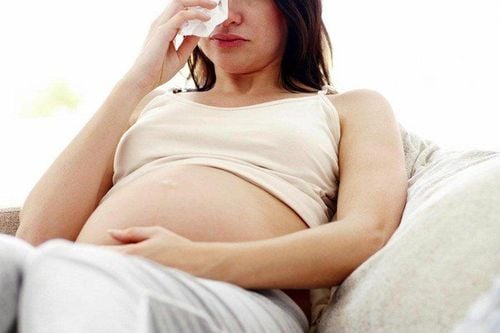
2.3. Premature birth due to placenta previa, placental abruption. Due to placental insufficiency, nutrition for the fetus is inadequate. Due to early departure from the mother's womb, the body is weak, and premature babies are difficult to survive or survive, with the risk of mental and physical sequelae. In addition, premature babies are also difficult to raise, often underweight, slow to grow, and parents have to spend a lot of effort to take care of them. Therefore, being aware of the factors that increase the risk of preterm birth will help families and doctors take timely measures to have a healthy baby born.
Vinmec International General Hospital is a hospital that has saved thousands of premature babies' lives over the years. Vinmec has mastered the measures to feed extremely premature babies, and is the first hospital in the North to take care of babies born 24 weeks premature. The procedures for caring and nurturing premature babies in particular and newborns with diseases in general at Vinmec bring about the same efficiency as in advanced countries, increasing the chances of babies being saved and healthy living. premature birth, increasing the chances for infertile families. Therefore, if you are in the high preterm birth category, pregnant women should choose reputable medical facilities and hospitals such as Vinmec International General Hospital to examine and monitor pregnancy and take measures to prevent preterm birth. effective..
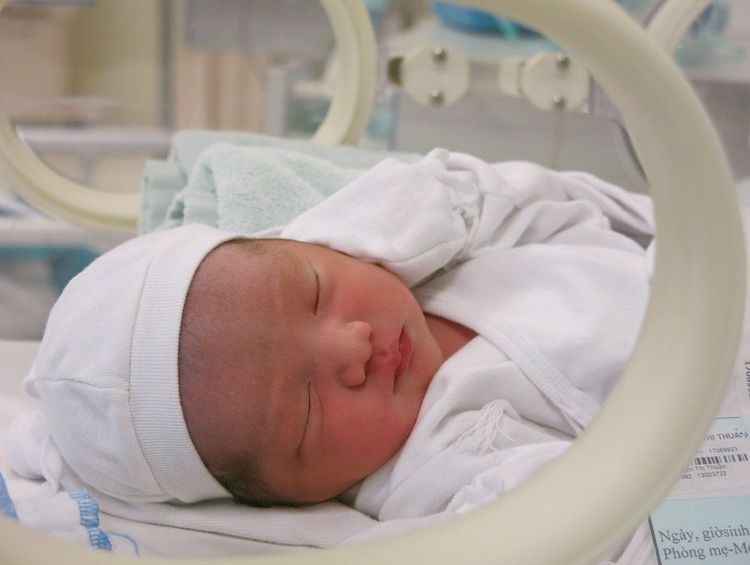
Advantages in the treatment and care of premature babies at Vinmec Times City include:
Modern equipment: Normal ventilator, high frequency ventilator, CPAP ventilator, incubator, ability to control infection Good, safe environment for children Experienced doctors and nurses: Doctor II Tran Lien Anh used to teach neonatal diseases, has a long working history at the Neonatal Resuscitation Department at the National Children's Hospital from 1979 to 2012 and is currently working as Head of the Department of Neonatology, Vinmec Times City International Hospital from 2012 to present. Not only taking care of premature babies, Vinmec also successfully operated and saved many babies with complex birth defects.
Please dial HOTLINE for more information or register for an appointment HERE. Download MyVinmec app to make appointments faster and to manage your bookings easily.






